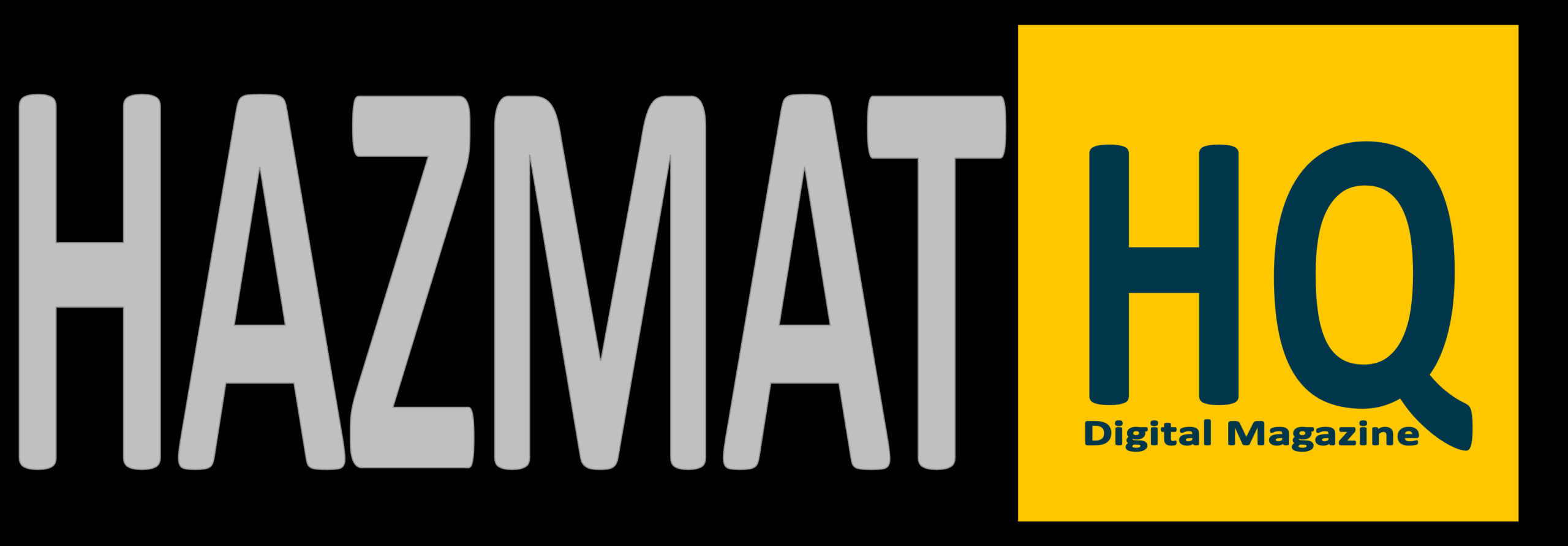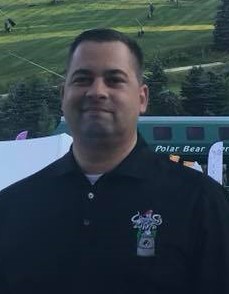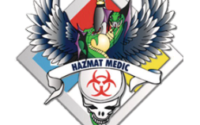Hazmat Academy
Derek Schaumann
“Just because you’re certified, it doesn’t mean you’re qualified.”
I heard this quote spoken by Ron Gore (Jacksonville Fire Rescue, retired, Safety Systems Training) nearly 20 years ago. While these words have always been true, it feels even more so today. The problem isn’t the students, the instructors, or the curriculum. The reality is that hazmat response has evolved and the learning curve is increasing. The question below (Fig. 1) is from a survey I conducted in 2016. The survey included a series of questions intended to determine the self-assessed readiness of newly certified technicians.

Certification vs Qualification
The State of Florida, and the Florida Fire College, adopted NFPA 472, now NFPA 470, as the standard for which fire service Hazardous Materials Technicians should be certified. Training programs adopted the IAFF 160 hours hazmat technician training curriculum. In 2016, Florida transitioned to the IFTSA curriculum while also adopting a hybrid (online/in-person) format for delivery. Regardless of the format, students completed a 34 page task book which was submitted to the Florida Fire College in order to receive state certification.
This transition brought many benefits, as well as new challenges. The greatest challenge was determining what amount of coursework should be online versus in-person. A few institutions/agencies continued providing all 160 hours in-person, some opted for 120 online/40 in-person, while others settled on something in between. Depending on where students received their training, the completion of the task book was subjective. Some student completed rudimentary “watch and then demonstrate” assessments while other programs worked the skills into scenarios that required the students to apply the skill in a way that more closely reproduced what they could be expected to do in the field. This resulted in a significant disparity in preparedness and qualification of skills for new technicians. For some, this meant almost needing to teach them all over again. Unfortunately, certificates became little more than confirmation of participation.
Class is Over, What Now?
It was at this time I found myself at a crossroads. I was moving from the role of hazmat instructor to program manager for hazmat training. As part of my new role, the VP of the college wanted to know our plans for embracing the hybrid training format to avoid losing students to other educational institutions. My team was hesitant to make the change; our primary concern being a reduction in the quality of our program. With the data from the survey, I was certain we could support our position. The battle came when a respected advisor weighed in and stated we were doing too much. “You should be teaching to the NFPA Standard only, not trying to make them rock stars. Their agencies are responsible for everything else.” While I agreed with this advisor, I knew the reality didn’t support this. At least, not my reality.

When I wasn’t teaching at the college, my full-time ride was as a Hazmat Team Lieutenant. My greatest challenge was always: time. Finding time to train and maintain competence on a growing inventory of equipment and technologies can be overwhelming, especially if you run more than just hazmat. As new members joined the team, a significant amount of that time was spent introducing them to our department’s specific equipment, SOP/SOG’s, etc. This was an informal process and varied from shift to shift. Through survey responses, I realized that this experience wasn’t uncommon (Fig. 2).
One Small Step
Nothing happens overnight. Well, that’s not true, a lot of things happen overnight. Department change usually isn’t one of them. When I joined the hazmat team in 2003, we didn’t have much of a training program for new members. My crew was always happy to train or go over equipment but most had only been on the team for less than two years. This led to focus on the things they were comfortable with and the rest was learning together. I probably spent a year locked in the hazmat office reading every manual, reference text, and watching VHS training tapes from the 80’s and 90’s. For me, this was perfect as I enjoy technical information. The problem is this method doesn’t work for everyone and there was no systematic/repeatable method of training.
Fast-forward to my assignment as a Lieutenant and within the first year my crew of experienced techs had promoted and I found myself with an eager, yet inexperienced, team. The remaining senior member of my team, a true wealth of knowledge backed by real world experience, worked with me to implement a plan. Simplicity was the key since everything would have to work within the confines of our regular shift and running first due calls. Enter, the checklist. It was a simple one-page document designed to guide each member through a progressive familiarization and training program.
In addition to the checklist, each member was assigned a piece of equipment or a specific skill. Their task was to learn as much as they could about their assignment and develop a basic class. The requirements included presenting the information, demonstrating the application, and creating a skill sheet which they would have the other members complete with a simple exercise. This serve two purposes: the members learned the equipment/skill and we were creating a training library. A systematic/repeatable method was finally in place.
The Giant Leap
If you’ve staying with me this long, it’s time for the Hazmat Academy. While the checklist, training and skill sheet development were great we still had a problem. Our biggest problem was the other two shifts. Not because they always left mess, broke or lost things, which they did. A lot. The real problem was each shift approached training differently resulting in discrepancies between the shifts.

The solution, we needed a program that prepared and evaluated new members, across the board. My greatest ally in this mission was my C Shift brother, Bob Coschignano. Bob and I taught and worked together for most of my fire service career. We both saw the writing on the wall. Our team of senior personnel was quickly turning over and we needed a solution.
Bob and I drafted a training proposal which included the first outlines for a Hazmat Academy. We laid out a curriculum, assessment tool, resource list, and presented our work. Reception to our plan was mixed to say the least. There were positives, a few negatives, and a lot of questions. What we thought was low hanging fruit ended up being out of reach. As I look back now, I understand that what we felt was a very simple and “duh” proposal was really one of many needs for the department. At the time, we were frustrated. We had two options, throw our hands up and admit defeat or continue to pursue what we knew was needed. Spoiler alert, Bob and I did not implement the Hazmat Academy.
The Hazmat Academy came after our tenure. The team who made it a reality may have used the general ideas we laid out, but the successful creation of the program is very much the hard work and dedication of the current team. They have developed a program that addresses the concerns Bob and I identified. Having just completed a year, they have facilitated four academies that trained and assessed nearly 50 new team members and alternates. The response from those members as been positive and there performance in the field reflects the value of the program.
Okay, but What is a Hazmat Academy?
It’s different for everyone. This may seem like an overly simplistic answer, but it is the truth. Some agencies train their technicians in-house while others have their technicians trained by outside resources. It is the latter that I believe most benefits from the Hazmat Academy. This is how most of our members became certified. By attending external training, members usually receive the “Minimum Standards” of hazmat. They are presented with basic equipment and skills needed to know you need to learn more.
So here is our program as an example. Remember, we aren’t training members to become technicians. They have already completed their 160-hour technician course and the Hazmat Academy is an opportunity to reinforce and enhance their competence and confidence.

Day 1:
- PPE familiarity and decision making
- Chlorine A Kit
- Lithium Battery Response
- Hydrocarbon Spill & Leak
- Transfer Pump, Flaring, Gas Line tools

Day 2:
- Basic Detection Devices
- Chlorine B Kit
- Air Monitoring & Confined Space operations
- Documentation

Day 3:
- EOD Interface
- Research Overview
- Intermediate Detection Devices
- Unknown Odor Scenario

Day 4:
- Intermediate Research
- Sampling and Field Analysis
- Advance Detection Devices
- Suspicious Powder Scenario
Day 5:
- Decontamination Procedures
- Chlorine C Kit
- Full Scale Scenario
Wrap Up
To understand where you’re heading you have to know where you are and how you got there in the first place. Our Hazmat Academy didn’t come quick or easy. It required the efforts of many and more importantly, it required buy-in. Identify your challenges, define your goals, and layout a plan. Be open to feedback and criticism as they provide the road map for your follow-up meeting(s). In the end, our goal is to build teams that are successful and sustainable. The juice is worth the squeeze! The success of the Hazmat Academy is due to the many dedicated members who develop and deliver the program. The author would like to recognize the following personnel whose efforts brought the academy from concept to reality: District Chief Edward Angelotti, Lieutenant Brandon Lange, Lieutenant Michael Callahan, Firefighter Jesse Radig, and Engineer Kyle DiVirgilio.




